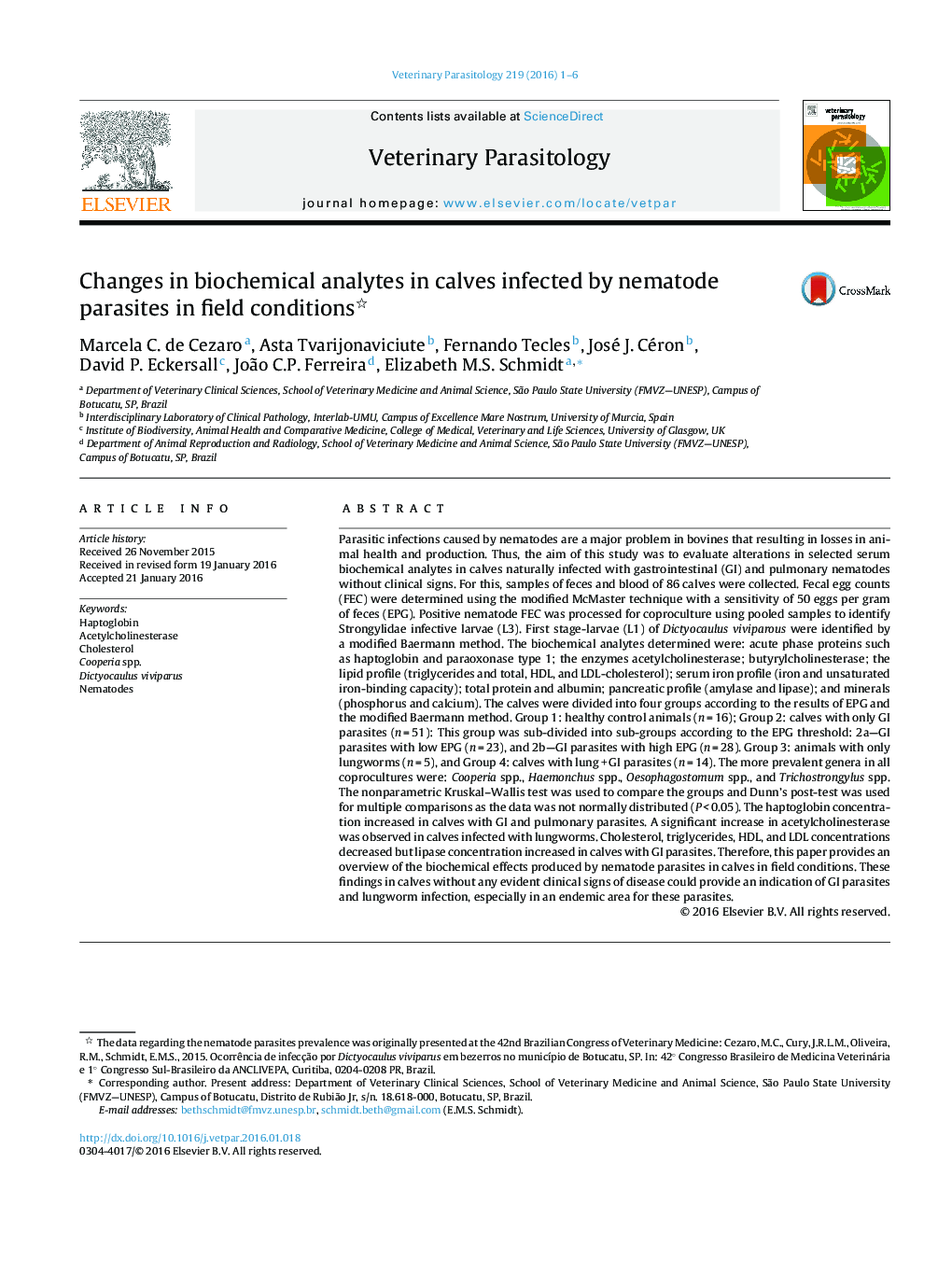| کد مقاله | کد نشریه | سال انتشار | مقاله انگلیسی | نسخه تمام متن |
|---|---|---|---|---|
| 2469869 | 1555657 | 2016 | 6 صفحه PDF | دانلود رایگان |
• Haptoglobin concentration increased in calves with gastrointestinal and pulmonary nematode infection.
• Acetylcholinesterase concentration increased in calves with Dictyocaulus viviparus infection.
• Decreases in the lipid profile were observed in calves with a high burden of gastrointestinal nematodes.
Parasitic infections caused by nematodes are a major problem in bovines that resulting in losses in animal health and production. Thus, the aim of this study was to evaluate alterations in selected serum biochemical analytes in calves naturally infected with gastrointestinal (GI) and pulmonary nematodes without clinical signs. For this, samples of feces and blood of 86 calves were collected. Fecal egg counts (FEC) were determined using the modified McMaster technique with a sensitivity of 50 eggs per gram of feces (EPG). Positive nematode FEC was processed for coproculture using pooled samples to identify Strongylidae infective larvae (L3). First stage-larvae (L1) of Dictyocaulus viviparous were identified by a modified Baermann method. The biochemical analytes determined were: acute phase proteins such as haptoglobin and paraoxonase type 1; the enzymes acetylcholinesterase; butyrylcholinesterase; the lipid profile (triglycerides and total, HDL, and LDL-cholesterol); serum iron profile (iron and unsaturated iron-binding capacity); total protein and albumin; pancreatic profile (amylase and lipase); and minerals (phosphorus and calcium). The calves were divided into four groups according to the results of EPG and the modified Baermann method. Group 1: healthy control animals (n = 16); Group 2: calves with only GI parasites (n = 51): This group was sub-divided into sub-groups according to the EPG threshold: 2a—GI parasites with low EPG (n = 23), and 2b—GI parasites with high EPG (n = 28). Group 3: animals with only lungworms (n = 5), and Group 4: calves with lung + GI parasites (n = 14). The more prevalent genera in all coprocultures were: Cooperia spp., Haemonchus spp., Oesophagostomum spp., and Trichostrongylus spp. The nonparametric Kruskal–Wallis test was used to compare the groups and Dunn's post-test was used for multiple comparisons as the data was not normally distributed (P < 0.05). The haptoglobin concentration increased in calves with GI and pulmonary parasites. A significant increase in acetylcholinesterase was observed in calves infected with lungworms. Cholesterol, triglycerides, HDL, and LDL concentrations decreased but lipase concentration increased in calves with GI parasites. Therefore, this paper provides an overview of the biochemical effects produced by nematode parasites in calves in field conditions. These findings in calves without any evident clinical signs of disease could provide an indication of GI parasites and lungworm infection, especially in an endemic area for these parasites.
Journal: Veterinary Parasitology - Volume 219, 30 March 2016, Pages 1–6
